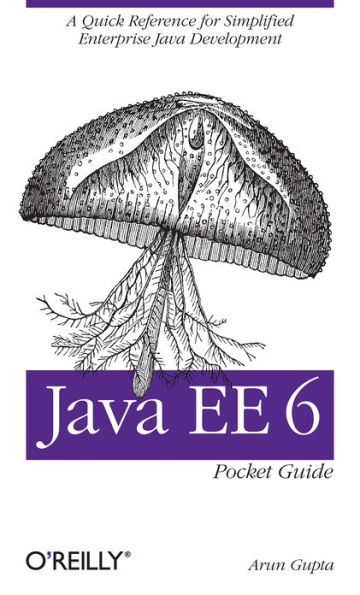This handy guide provides an overview of Java Enterprise Edition 6’s main technologies and includes extensive, easy-to-understand code samples that demonstrate the platform’s many improvements. You’ll quickly understand how Java EE 6 simplifies the process of developing and deploying web and enterprise applications.
- Explore what’s new in Java EE 6, including Contexts and Dependency Injection and the Java API for RESTful Web Services
- Discover how Java EE 6 features relate to design patterns in web and enterprise applications
- Get the specifications for making your application Java EE compliant
- Learn about revisions to Enterprise JavaBeans, JavaServer Faces, and other components
- Find out how Java EE 6 profiles change the platform’s “one size fits all” approach
- Get started with Java EE 6 development and deployment, using NetBeans IDE and GlassFish
This handy guide provides an overview of Java Enterprise Edition 6’s main technologies and includes extensive, easy-to-understand code samples that demonstrate the platform’s many improvements. You’ll quickly understand how Java EE 6 simplifies the process of developing and deploying web and enterprise applications.
- Explore what’s new in Java EE 6, including Contexts and Dependency Injection and the Java API for RESTful Web Services
- Discover how Java EE 6 features relate to design patterns in web and enterprise applications
- Get the specifications for making your application Java EE compliant
- Learn about revisions to Enterprise JavaBeans, JavaServer Faces, and other components
- Find out how Java EE 6 profiles change the platform’s “one size fits all” approach
- Get started with Java EE 6 development and deployment, using NetBeans IDE and GlassFish

Java EE 6 Pocket Guide: A Quick Reference for Simplified Enterprise Java Development
210
Java EE 6 Pocket Guide: A Quick Reference for Simplified Enterprise Java Development
210
Product Details
| ISBN-13: | 9781449338343 |
|---|---|
| Publisher: | O'Reilly Media, Incorporated |
| Publication date: | 09/10/2012 |
| Sold by: | Barnes & Noble |
| Format: | eBook |
| Pages: | 210 |
| File size: | 4 MB |
